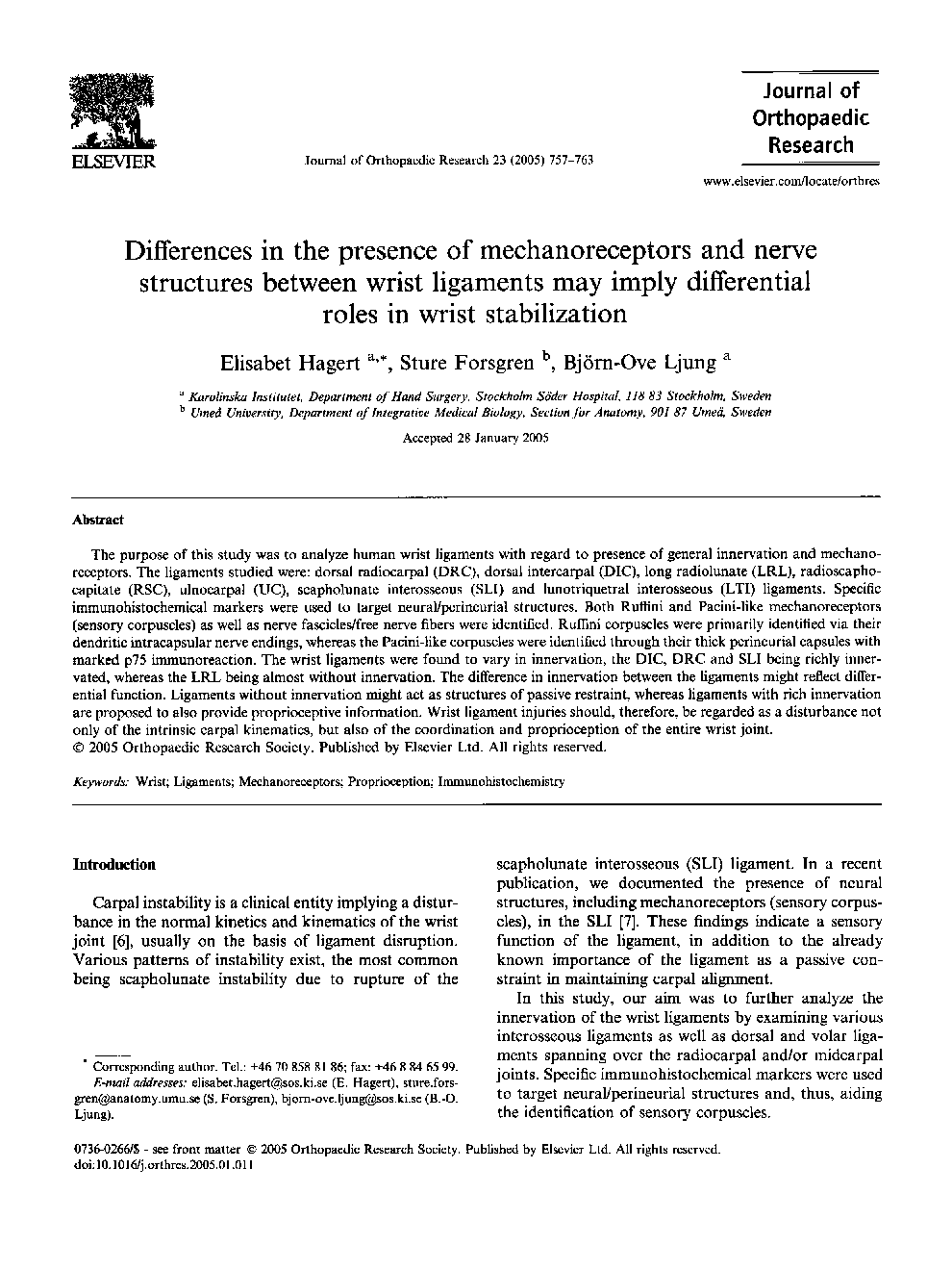| Article ID | Journal | Published Year | Pages | File Type |
|---|---|---|---|---|
| 9353932 | Journal of Orthopaedic Research | 2005 | 7 Pages |
Abstract
The purpose of this study was to analyze human wrist ligaments with regard to presence of general innervation and mechanoreceptors. The ligaments studied were: dorsal radiocarpal (DRC), dorsal intercarpal (DIC), long radiolunate (LRL), radioscaphocapitate (RSC), ulnocarpal (UC), scapholunate interosseous (SLI) and lunotriquetral interosseous (LTI) ligaments. Specific immunohistochemical markers were used to target neural/perineurial structures. Both Ruffini and Pacini-like mechanoreceptors (sensory corpuscles) as well as nerve fascicles/free nerve fibers were identified. Ruffini corpuscles were primarily identified via their dendritic intracapsular nerve endings, whereas the Pacini-like corpuscles were identified through their thick perineurial capsules with marked p75 immunoreaction. The wrist ligaments were found to vary in innervation, the DIC, DRC and SLI being richly innervated, whereas the LRL being almost without innervation. The difference in innervation between the ligaments might reflect differential function. Ligaments without innervation might act as structures of passive restraint, whereas ligaments with rich innervation are proposed to also provide proprioceptive information. Wrist ligament injuries should, therefore, be regarded as a disturbance not only of the intrinsic carpal kinematics, but also of the coordination and proprioception of the entire wrist joint.
Related Topics
Health Sciences
Medicine and Dentistry
Orthopedics, Sports Medicine and Rehabilitation
Authors
Elisabet Hagert, Sture Forsgren, Björn-Ove Ljung,
